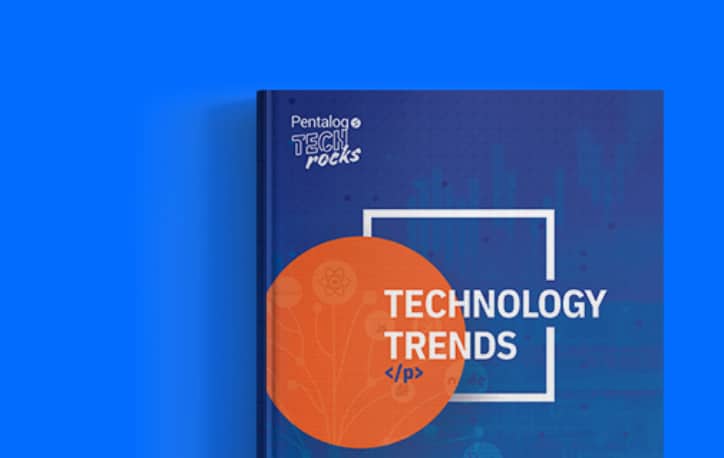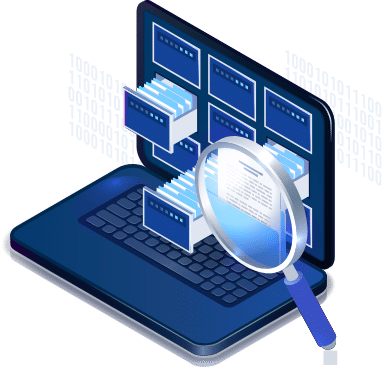Cloud adoption promises to unlock $3 trillion in global business value by 2030. However, as a McKinsey report highlights, many organizations are losing their share of this opportunity by not moving beyond basic adoption.
Interestingly, the greatest challenges often emerge post-migration. Inefficiencies and oversight at this stage can compromise sensitive data and operations. Without effective post-migration strategies, security leaders risk seeing their data migration efforts undermined by poor data quality, fragmentation, and degrading data integrity. This can lead to operational blind spots, weakened defenses, and vulnerabilities that cybercriminals can exploit.
Security teams rely on consistent and accurate data to detect threats and ensure compliance with strict regulatory standards. When data integrity is compromised – through corruption, fragmentation, or loss – vital security operations can be undermined. This can lead to missed security events, inaccurate reporting, and penalties for non-compliance.
The Challenges of Maintaining Data Integrity Post-Migration
Maintaining data integrity post-migration is challenging. The issues that arise in the absence of an efficient post-migration data management strategy can jeopardize data security, investigations, and the overall operational efficiency of organizations. Some of the key challenges those working in security operations face include:
Data Fragmentation
One of the most significant challenges that can disrupt entire security operations is data fragmentation. As organizations migrate to cloud or from one platform to another, data can become scattered and create data silos that hinder a cohesive view.
This fragmentation can lead to inconsistencies, where different systems or datasets contain different parts of data or varying versions of the same data. In both cases, it increases the risk of errors, faulty judgments, and flawed decisions.
Data Loss or Corruption
During migration, data can become corrupted or lost. Inaccurate, incomplete, or inconsistent data can lead to poor decision-making and hamper the efficiency of security operations.
Integration Complexity
Migrating data to the cloud often involves integrating disparate systems and applications. This can be challenging and can result in fragmented data silos that make it difficult to ensure consistency and accessibility across the organization.
Legacy System Discrepancies
With all the latest technologies that are now available, we may think that businesses no longer use legacy systems. But that’s not the case. As of 2021, over two-thirds of businesses relied on legacy applications for core business operations. The percentage might have decreased since then, but there are still a significant number of companies that continue to use their legacy systems.
According to research, the top three challenges with legacy systems are:
- Integration with new applications (61%)
- Lack of business agility (57%)
- Security exposure (55%)
Discrepancies between old and new systems can cause data mismatches, where the information in one system does not correspond to the same data in another. This inaccuracy and inconsistency can undermine trust in data and lead to hesitance in decision-making and potential investigation failures.
Security Implications and Compliance Risks
Data integrity issues can also introduce significant security vulnerabilities. They may expose data to breaches. Moreover, inaccurate or outdated data can raise the risk of organizations failing to meet regulatory requirements due to poor data governance. These lapses can result in hefty fines and reputational damage.
Limited Visibility
Post-migration, organizations may lack visibility into their data environment, which makes it challenging to monitor data integrity continuously. This lack of oversight can hinder timely detection of data breaches or integrity issues.
Cultural Resistance
Transitioning to new systems and processes can meet resistance from staff who are accustomed to existing workflows. This can cause issues during migration as well as impede the adoption of best practices necessary for maintaining data integrity post-migration.
Key Strategies for Ensuring Data Integrity Post-Migration in Security Operations
Ensuring data integrity post-migration requires a multifaceted approach that focuses on validation, governance, security, and leveraging technology. Here are key strategies organizations can implement to minimize (if not eliminate) risks to their security operations:
1. Continuous Data Validation and Profiling
Regular data validation and profiling are essential for identifying and rectifying integrity issues. By implementing automated tools, information security professionals can continuously assess data quality throughout the post-migration phase.
Profiling tools allow organizations to understand data distributions, detect anomalies, and ensure consistency across platforms. For instance, using data profiling techniques can reveal unexpected data patterns that may signal potential integrity problems before they escalate into significant issues.
2. Implementing Data Governance Framework
A robust data governance framework helps organizations establish policies and procedures for data management. It ensures accountability, quality, and compliance, enabling organizations to maintain data integrity. By clearly defining roles and responsibilities, organizations can create a culture of data stewardship that emphasizes the importance of data accuracy and reliability.
Key components of a governance framework include establishing data quality standards, defining data ownership, and providing regular training for staff on data management best practices. This not only ensures efficient data monitoring but also helps create accountability and, eventually, enhance data accuracy.
3. End-to-End Encryption & Access Control
Protecting data integrity involves securing data at all stages – during transfer and at rest. Implementing end-to-end encryption safeguards sensitive information from unauthorized access and ensures that even if data is intercepted, it remains unreadable. Coupled with strict access control measures, organizations can limit who has permission to view or manipulate data.
Role-based access controls (RBAC) and multi-factor authentication (MFA) are effective strategies to mitigate risks and enhance data security.
4. Monitoring and Auditing for Anomalies
Continuous monitoring of data environments is crucial for identifying unusual activity that may indicate integrity breaches. Implementing advanced data monitoring tools can help organizations detect anomalies in real-time. This allows for swift actions to prevent potential data loss or corruption.
Regular audits also ensure compliance with industry standards and regulations, and provides assurance that data integrity is maintained throughout the post-migration landscape.
5. Utilizing Data Integration Tools
Advanced data integration tools, like DataMatch Enterprise by Data Ladder, can streamline the merging of disparate systems and platforms. They can facilitate real-time data synchronization – ensuring that all systems have access to accurate and up-to-date information, thereby, reducing fragmentation.
Leveraging Automation and AI in Post-Migration Data Integrity
Automation tools and AI technologies can supplement data integrity efforts by continuously monitoring data for anomalies and flagging potential issues. This proactive approach allows infosec professionals and data teams to address data quality problems before they escalate.
Automated Data Cleansing
Automation plays a pivotal role in data cleansing by streamlining processes that would otherwise be time-consuming and error-prone. Automated data cleansing tools can detect duplicated, standardize formats, and correct inaccuracies in real-time to ensure that data remains reliable and consistent throughout its lifecycle.
AI-Driven Threat Detection
Artificial Intelligence (AI) enhances post-migration security by providing advanced threat detection capabilities. AI algorithms can analyze patterns in data access and usage, which helps identify potential security threats before they manifest into breaches. For instance, AI systems can flag unusual data access patterns indicative of a data integrity breach, enabling organizations to respond proactively.
Automation in Audits and Compliance
Automated audits can be great for ensuring compliance and maintaining data integrity. By leveraging automation tools, organizations can conduct regular audits with minimal effort and maintain continuous oversight of data quality. This proactive approach reduces the risk of non-compliance with regulatory standards thereby safeguarding the organization’s reputation and financial standing.
Automated compliance solutions can generate reports and alerts that streamline the audit process and provide transparency and accountability.
Ensure Data Integrity with DataMatch Enterprise
Maintaining data integrity post-migration is not just about avoiding fragmentation or corruption; it’s a foundational requirement for the ongoing success and stability of security operations. Without it, organizations can expose themselves to considerable operational, financial, and reputational risks.
One powerful solution to ensure data integrity post-migration is DataMatch Enterprise by Data Ladder. This advanced data quality and matching software offers a comprehensive set of tools specifically designed to address data integrity challenges that may arise post-migration. These include:
Data Profiling & Quality Assessment
With built-in data profiling capabilities, DataMatch Enterprise helps security teams understand the distribution and quality of their data. This feature provides insight into potential anomalies or integrity issues, which allows for quick remediation before they escalate into larger problems.
Data Deduplication and Cleansing
One of the key threats to post-migration data integrity is fragmented or duplicated data. DataMatch Enterprise’s advanced data cleansing and deduplication features help remove duplicates and standardize data formats to ensure that your organization works with accurate and consistent information across all systems.
Advanced Matching Algorithms
DataMatch Enterprise uses sophisticated matching algorithms to integrate disparate datasets with high accuracy. This ensures that migrated data is consolidated into cohesive, clean records, reduces fragmentation, and minimizes the risk of errors in decision-making and operations.
Real-Time Data Integration
To avoid post-migration data silos, DataMatch Enterprise supports seamless real-time integration between platforms to ensure your systems are always working with the most up-to-date and accurate data. This capability significantly reduces operational inefficiencies and improves the overall visibility of data across your organization.
DataMatch Enterprise can help those overlooking security operations confidently navigate the complexities of post-migration data management and strengthen their risk mitigation efforts. This comprehensive, efficient platform ensures that your data remains accurate, reliable, and secure and thus, enables your organization to uphold data integrity even after migration, avoid compliance risks, and maintain seamless operations.
DataMatch Enterprise is a reliable, scalable, and efficient solution for those looking to enhance their data integrity and security operations post-migration. To learn more, download a free trial today or book a demo with our experts.










































